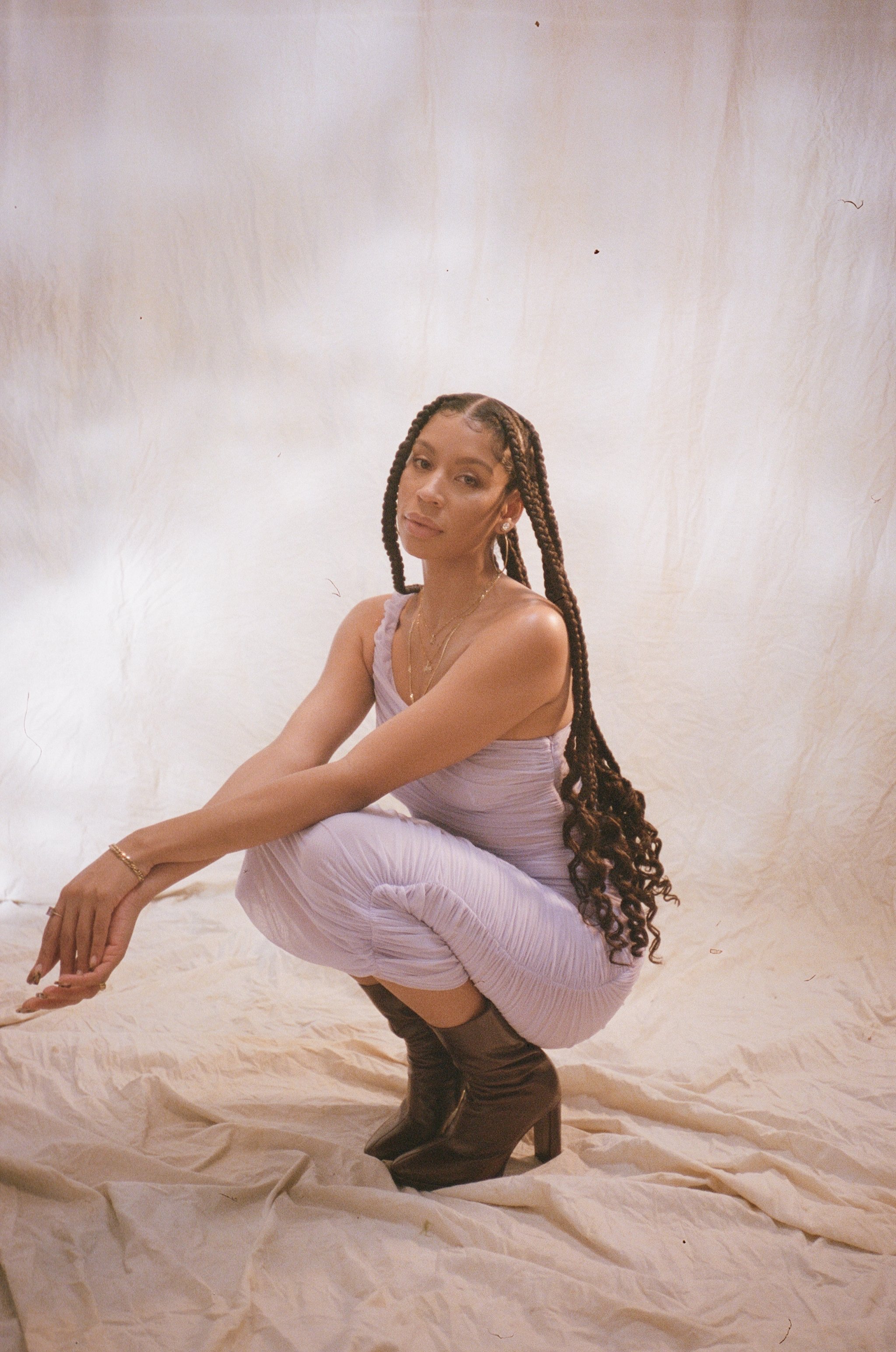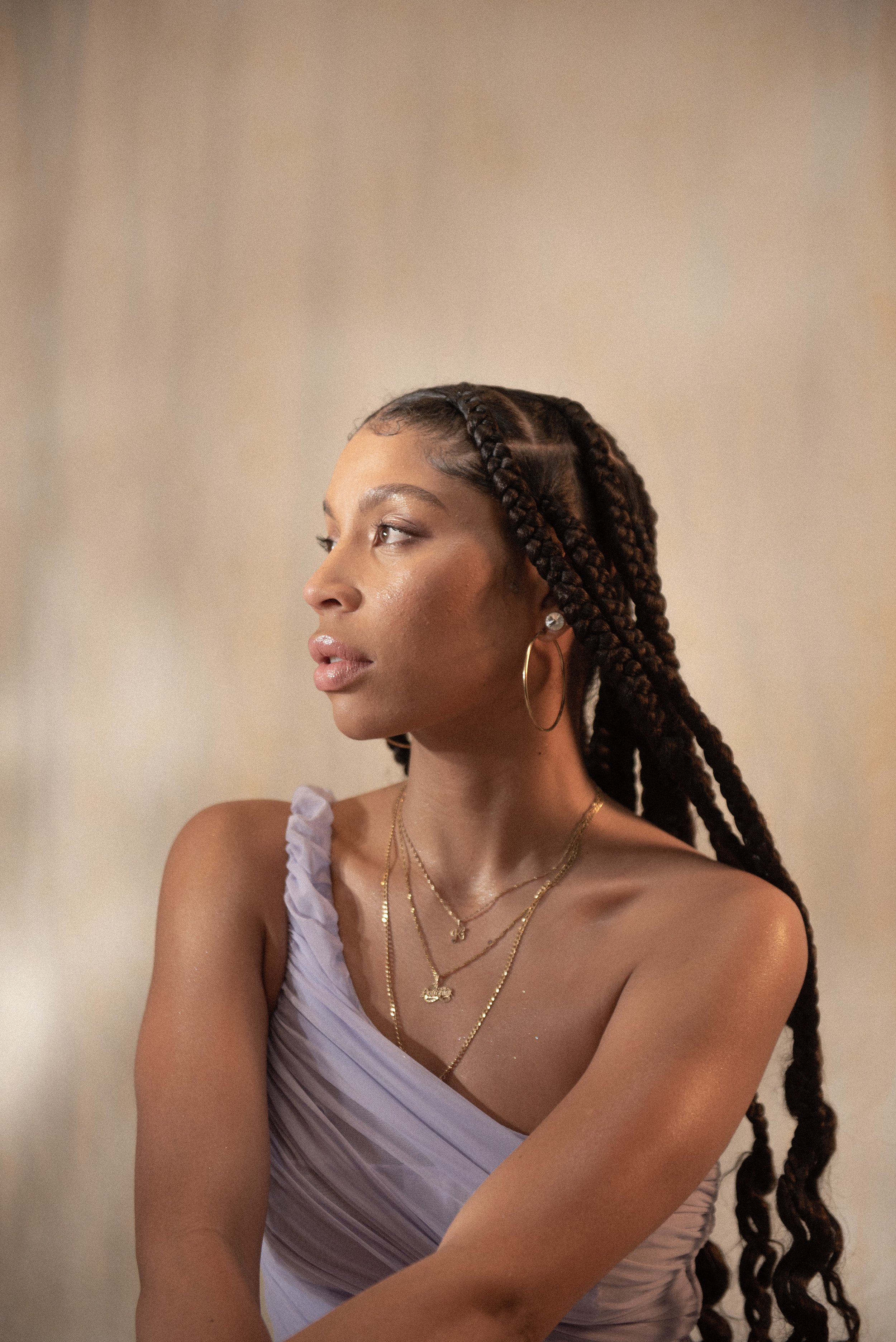Keesha Chung Depicts an Authentic Black Toronto in Her First Short grey area
Photo: Roya DelSol / Hair: Ace of Braids / Nails: PlayGirl Nailz
Toronto is known as the "screwface capital," where we rarely openly support our own, and when we do, it is hard to believe the support is genuine. Opportunities for Black creatives in the city are few and far between, and the lack of opportunities births our dog-eat-dog reality. Despite this truth, the writer, director, producer and co-founder of Collective Culture, Keesha Chung, views the lack of creative infrastructure in Toronto as an opportunity to build.
I connected with Chung to discuss this and other inspirations behind her first short film, grey area, the importance of showcasing dynamic Black-Canadian cultures on screen, collaborating with fellow Torontonians and more.
VERACIA ANKRAH: When and where did you conceive the idea for grey area?
KEESHA CHUNG: I came up with the idea for grey area when I was doing my undergraduate degree in Women Studies at Concordia University. At that time, Lena Dunham’s show Girls was popular––I know she’s problematic, but I really liked how that show portrayed friendship. It felt authentic and honest. I remember watching it and thinking, “Imagine if someone did this with Black people?” Shortly after that, Insecure came out. Then I was like, “Imagine if someone did this in Canada?” So those two shows set the tone for the kind of stories I want to tell––both are about self-discovery and messy relationships.
For my first film, I knew it had to be something that would reflect where I came from. One of the things I love about Insecure is that LA plays an essential role, as a character that adds new context to a coming-of-age story. It brings us into Issa’s world very organically and authentically. I knew I wanted my version of that for my first film. Toronto had to hold space in grey area in the same way. That was really the starting point. I hadn’t seen a story set in Toronto that reflected my experiences as an emerging Black creative, so I made one.
Photo: Roya DelSol
“For my first film, I knew it had to be something that would reflect where I came from.”
VA: Are the themes in your short inspired by your real-life at all? Complicated relationship with an ex? Pursuing a career in the cutthroat world of entertainment and fashion?
KC: Everything that I create––whether it’s an event or an article or starting an organization like Collective Culture––is inspired by my life. I pull from my reality as most creatives do. But when it came to grey area, I had clear objectives going into it. One was to create a story that challenged representations by centring Black people without focusing on trauma and oppression. To do that, I needed to be vulnerable and pull from experiences in my personal life and the experiences of people around me. It was pretty cathartic, especially watching the film with other people knowing how much of myself I put into it. Although it’s fiction, it’s definitely informed by my reality, and I hope people can feel that vulnerability and authenticity.
I knew I wanted to set my first film in the modelling world to speak a bit more to the fashion aspect. When we see movies about the fashion world or people who struggle with distorted eating, it’s extreme and unrealistic. So I saw this as an opportunity to contribute to that narrative differently. I started modelling when I was 16, and I knew I wanted to set grey area in a familiar place. I also started my media career in that space, so it only felt natural to set my first film in it.
Photo: Roya DelSol
VA: I know you were intentional about showcasing Black Toronto art and artists in all facets. You included the work of visual artist Moya Garrison-Msingwana and music by Faiza and VillaBEATZ, and you featured Toronto-based brands like SP BADU, Tyrell Brand and 4YE. What did it mean to include works from Black Canadian artists?
KC: This was a crucial part of this project. With grey area, I wanted to create something that extended beyond just the story and characters. I saw this project as an opportunity to highlight creatives I am inspired by and admire. I wanted to bring all these creatives together on one project. This city is unique and has all this talent, but it’s almost like we don’t have many platforms to showcase it. Places like New York, LA, Chicago, London or Paris have a specific infrastructure that we don’t have here. It wasn’t just intentional to include these creatives; it was an integral part of the storytelling. This film would not have been the same without Toronto’s presence being prominent both in front and behind the camera.
VA: Rarely do we see or hear popular Black Toronto language on film. How important was it to have authentic Toronto dialogue in your script?
KC: Most of our dialect and slang is from the Caribbean––really it’s Patois. And it’s also infused with words from different African countries. This is because many of us are first and second-generation. So the origins of the dialect and slang reflect the city’s diversity, which is an essential feature of what makes this city unique.
So often, we [Black Canadians] get bunched in with the “African-American” experience. But the cultures are vastly different. When Americans think about Canada, specifically Toronto, they don’t know we have this vibrant culture unless they come here. And other parts of the world just jumble us in with America and overlook how much we have to offer. So the language had to be there to continue the thread of this film looking, feeling and sounding like Toronto and reflecting the Black Canadian experience. When people watch it, they’ll hear it. It’s not too in your face, but it’s there.
Photo: Jacqueline Ashton
VA: I know you began conceptualizing your film over five years ago, yet our current pandemic climate is somewhat of a consistent “grey area.” Did these events inspire the title of the film at all?
KC: No, they didn’t. The film’s title reflects where Dre and Amari are. When people go through breakups but are still emotionally tied to someone, there is that messy time. You see them, it’s weird, and you know you shouldn’t talk to each other, but you still want to. That’s why I called this film grey area. Most of the time, things are never black and white, especially in relationships. That nuance is fascinating to me. Moments when there is no right or wrong, things just . . . are what they are. I love moral ambiguity. When watching grey area, both Amari and Dre make bad decisions; there was enough blame to go around on both sides, neither is right nor wrong. I watched the movie with my family over the Christmas holidays. My 18-year-old cousin was there with his friends, and they had a 40-minute argument about Dre and Amari. It kind of went in circles, and I loved it because that was the point. One could argue for either side and have a very proper stance but never settle on one side. And often, that’s how these things play out in real life. This is the story’s theme, so I wanted to ensure the title reflected that.
VA: In The Star, you mentioned making a conscious decision to steer clear of portraying Black pain and trauma in your storytelling. What are your current favourite multifaceted Black stories on film or television that aren’t hyper-focused on Black pain?
KC: Insecure. That show is like my north star when I think about the kind of content I would love to create one day. It set a new bar for Black storytelling. Issa did something never done before. Even the way they shot Black skin on the show. It was intentional and looked incredible. Throughout the series, she showed Black women in a very kind, loving and honest way. Yeah, there are moments when she talks about racism, but that’s not what the story is about, you know? I think we just need more of that. We need more stories that highlight our joy and highlight us being complicated and dynamic. My admiration for Issa and Insecure solidified further when I saw the BTS doc they released. Her show did a lot for her community and the industry at large. It was for the culture. She created something that extended far beyond her as the storyteller. She created a community and made it easier for someone like me to dream about doing what she did.
VA: Your short follows a Black woman creative navigating the Toronto scene and leaving the city to pursue her dreams in London. What are your thoughts on the popular Toronto narrative of having to “make it” elsewhere to seemingly succeed at home?
“We need more stories that highlight our joy and highlight us being complicated and dynamic.”
Photo: Roya DelSol
KC: I think it’s a reality, and it’s annoying, but it goes back to what I was saying about platforms for us to showcase our work. Toronto is emerging, and that is not to say our talent is emerging, but the creative infrastructure is. We have so many people from the city who are so talented, but we don’t have the type of financing behind our projects or platforms to just create things as other cities do. I think the music industry is where it’s shifting. That is where people have more opportunities now. But in film and TV, we are still telling stories from here that don’t reflect the people of Toronto in particular.
It’s a double-edged sword. It sucks that we don’t have that, but I also see it as an opportunity to build it. There are so many creatives doing it big in the city right now. Bully Magazine is a fantastic example. Shows like Big Blue created by Gyimah Gariba, The Porter, Next Stop on CBC Gem are other examples. I also had the privilege of working on The Shift with Kayla Grey. That show is making waves in the space it occupies as well. Different places in the city have platforms that centre our experiences, but they are still new, and we need more. Having one here and one there is not enough. Black people are not monolithic, so our opportunities should not be either. I completely understand people wanting to go elsewhere to be a part of an established industry with more money, but as someone who is from here, I think it’s an opportunity to make it easier for generations to come.
Photo: Roya DelSol
VA: What is the greatest takeaway you want others to walk away with after watching grey area?
KC: I hope this film inspires other filmmakers to create stories like this. Bottom line, if something doesn’t exist, create it. Tell your story, and don’t be afraid to take your time doing it. Find people that elevate you creatively and build a community with them.
In terms of the story, I hope people can relate to Dre and that seeing a character like her on screen helps others feel a little less alone, especially young women. But overall, I hope this film shows people how much Toronto’s creative community has to offer. This is just the beginning, and if people like what they see, they should show up for us.
grey area will be showcased at the Ottawa Black Film Festival from March 24- March 27.







